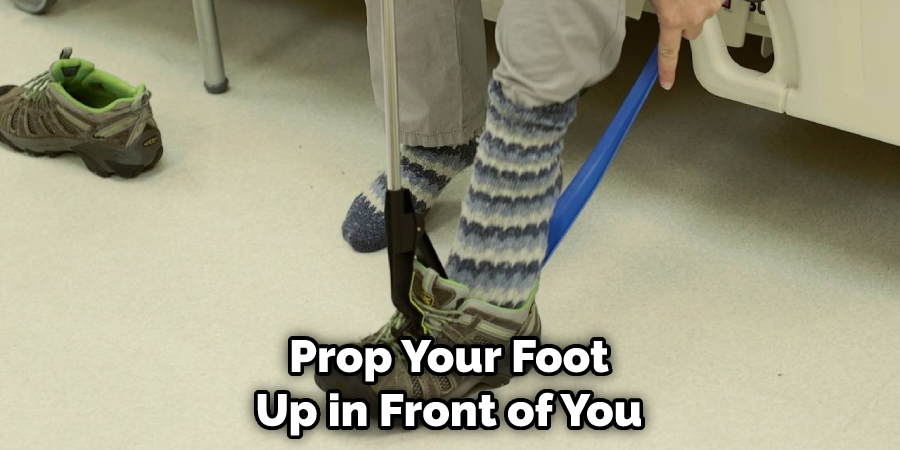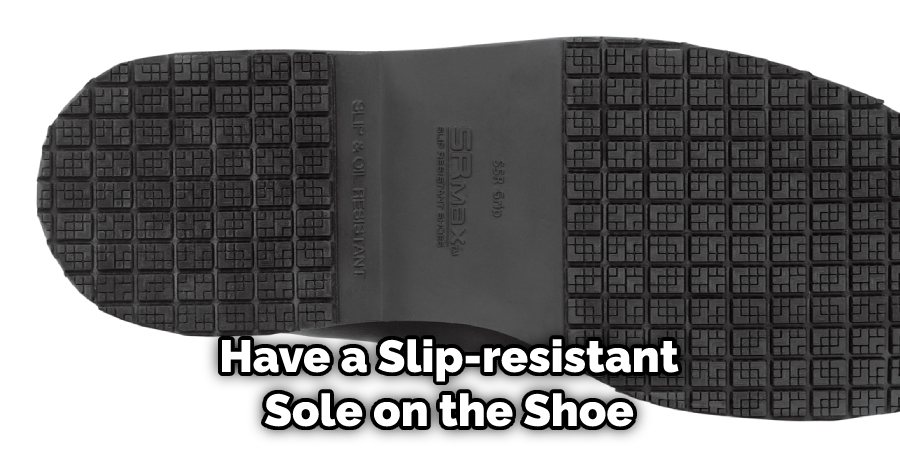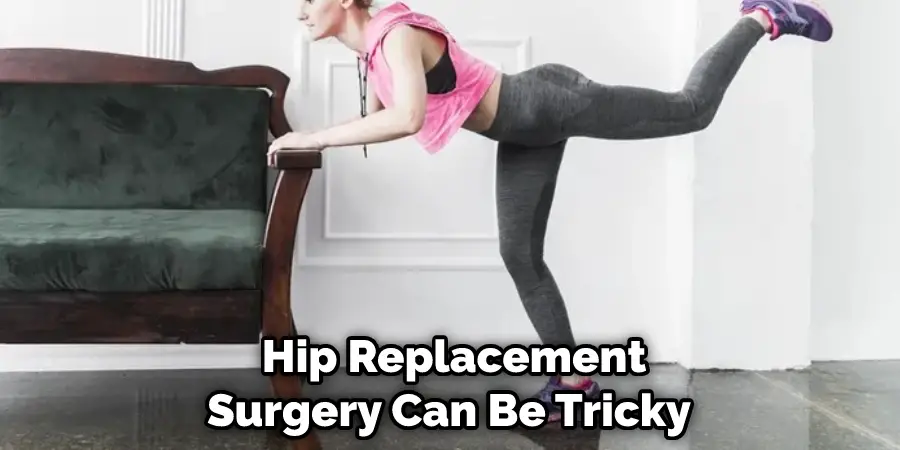Putting on shoes after a hip replacement surgery is an important milestone in recovery. After a hip replacement, the joint must be allowed to heal and re-stabilize over time. Putting on shoes helps to protect your new joint from further damage or irritation due to activity or walking on hard surfaces.

It also provides stability when walking and may reduce the risk of falls. Putting on shoes can help keep your new hip joint aligned and reduce pain or discomfort.
Putting on shoes after a hip replacement can be much easier than before. This is because the surgery has replaced any damaged parts of your hip bone and joint, which may have been causing you pain or difficulty in movement when trying to put them on.
The hip replacement should have eliminated any discomfort or soreness in your hip area when you put on shoes. In this blog article, you can find step-by-step instructions on how to put on shoes after hip replacement.
Summary: After hip replacement surgery, practicing proper techniques when putting on shoes is important to avoid damaging the new hip joint. Sitting on a chair or bench with your feet on the ground is recommended. Choose shoes with a wider opening to make it easier to slip your foot inside without bending your hip beyond a 90-degree angle.
Step-by-step Instructions for How to Put on Shoes After Hip Replacement
Step 1: Inspect Your Hip Condition
Check with your doctor to ensure it is safe to put on shoes after hip replacement. Make sure that the shoes you plan on wearing have good support and cushioning and are easy to slip on and off. If not, consider purchasing new shoes that are well-suited for your condition.
Step 2: Choose the Right Shoes
Choose shoes that fit your feet well and provide good support. Make sure the shoe has a wide toe area to accommodate swelling. Look for shoes with laces or Velcro closures rather than slip-on, as they provide additional support.
Step 3: Put on Your Socks
Put on socks to protect your feet and provide extra cushioning. Choose lightweight, breathable fabric such as cotton or wool that won’t rub against your skin. Make sure they fit snugly around your feet and ankles, so they don’t slip off while putting on your shoes.
Step 4: Sit Down to Put on Your Shoes
Sit down on a chair or bench and prop your foot up in front of you. This will make it easier to reach the shoe and put it on. Use a shoehorn if necessary to help guide your foot into the shoe. Make sure the heel of your foot is all the way in and that your toes have plenty of room.

Step 5: Fasten the Closure
If you are wearing shoes with laces or Velcro, fasten them securely. You may need to adjust the fit by loosening or tightening the laces or Velcro. Once your shoes are on, stand up slowly and steady yourself against a counter or wall if necessary. Wear comfortable clothing such as sweatpants or yoga pants to move easily.
Step 6: Take Breaks Between Steps to Rest
Take breaks if you need to, and rest your hip if it becomes painful. You may want to use a cane or walker for additional support. Now that your shoes are on practice walking in them around the house. This will help you get used to the new sensation of wearing shoes after hip replacement.
Step 7: Follow Up With Your Doctor
Follow up with your doctor to ensure you are healing properly after the procedure. Make sure to discuss any issues or concerns you have about putting on shoes after hip replacement. You may need additional assistance or special equipment. With proper care and attention, your hip replacement should heal quickly, and you’ll be able to enjoy your new shoes in no time.
8 Tips for How to Put on Shoes After Hip Replacement
- Make sure to sit in a chair with armrests on either side or use a reacher to pick up and put on your shoes. It is important to have stability while putting on shoes after hip replacement surgery.
- To reduce the strain of bending over, tie your laces loosely so you can slip your foot into the shoe by just sliding your foot in.
- Consider purchasing shoes with Velcro straps or elastic laces for easier dressing after hip replacement surgery.
- To reduce the strain on your back and hips, place a box or stool near you when putting on shoes so you can sit comfortably while bending down to put on shoes.
- If you have difficulty with balance while putting on shoes, consider using a cane or walker to help steady yourself and prevent falling.
- Make sure that your shoes fit properly after hip replacement surgery. Shoes should not be too tight and should provide enough room for your toes to move comfortably.
- Have a slip-resistant sole on the shoe, so you don’t experience slips or falls while you are recovering from hip replacement surgery.
- Place the shoes on the floor side by side and put your foot in one shoe at a time. This will help reduce strain on your back and hips while putting on shoes after hip replacement surgery.

By following these tips, you can safely and confidently put on shoes after hip replacement surgery. Following these safety guidelines will help reduce pain and ensure that you don’t injure yourself further during the healing process.
How Long After Hip Replacement Surgery Should You Wait Before Attempting to Put on Shoes?
The general timeline for recovery after hip replacement surgery is approximately six to eight weeks. However, this can vary depending on the specifics of your procedure, so it is important to follow the instructions given to you by your doctor. Depending on how well you progress in your rehabilitation program, you may be able to start putting on shoes earlier than the recommended timeline.
It is important to proceed cautiously when putting on shoes after hip replacement surgery. It is best to start with low-impact activities and work up to more strenuous activities as your recovery progresses. Before attempting to put on shoes, you should ensure that you can stand for a few moments without pain or discomfort.
You should be able to move your leg without any difficulty, and you should also be able to bend or flex your hip without pain.
In addition, it is important to ensure that the shoe fits correctly. This can help prevent further complications or injuries. It is best to select a comfortable pair of shoes with a good fit. Avoid narrow or tight-fitting shoes, as they can add extra pressure onto your hip joint and cause discomfort.
Is It Safe to Bend at the Hips While Putting on Shoes After Hip Replacement Surgery?
Putting on shoes after hip replacement surgery can be tricky, but it is important. It’s important to ensure you do it safely and protect your new hip joint. After all, if you don’t take proper care of it, the results of your surgery could be put at risk.

Bending at the hips is a natural motion that we all do regularly. However, after having hip replacement surgery, it’s important to be extra careful when bending at the hips. This is especially true when putting on shoes or socks. It’s important to use caution and take your time, so you don’t strain your new hip joint.
What Types of Shoes Should You Avoid Wearing After a Hip Replacement Surgery?
It is important to choose the correct type of shoes for your feet after hip replacement surgery. Shoes should have good support, cushioning, and stability. Avoid wearing high heels, pointed-toe shoes, slip-on shoes (such as loafers), and flats, as these types of shoes do not provide adequate support for your feet post-surgery. Shoes with laces or straps can help provide stability and support to your ankles and feet.
Additionally, it is important to ensure that the shoes have a wide toe-box area, as this will allow for more room for swelling that may occur after surgery. Lastly, avoid wearing shoes with a stiff sole, as this can cause irritation and discomfort to the feet.
When selecting shoes after hip replacement surgery, it is important to consider your lifestyle and level of activity. More active people may want to look at athletic shoes designed for running or walking, as these types of shoes provide the most cushioning and support.
Those who spend much of their day on their feet should look for shoes with shock-absorbing soles, which will help protect the feet and joints from additional strain. Finally, those who are more sedentary may want to consider shoes with a soft sole and good arch support.

Conclusion
The major disadvantage of putting on shoes after a hip replacement is a difficulty in doing so. It can be difficult to balance while bending over, and putting on the shoe can be awkward. Additionally, depending on how far below the waist level the surgery was done, it may not be possible to reach down that low without causing pain or discomfort.
Talking to your doctor or physical therapist about the safest way for you to put on shoes after hip replacement surgery is important. Putting on shoes after hip replacement surgery can be a difficult process. However, with the right techniques and tips, it is possible to do so without too much difficulty.
Start by selecting shoes that are comfortable and wide enough for your foot. Make sure you have plenty of time and space to complete the process. Use a shoehorn or shoe-tying aid to make the process easier. I hope reading this post has helped you learn how to put on shoes after hip replacement. Make sure the safety precautions are carried out in the order listed.

